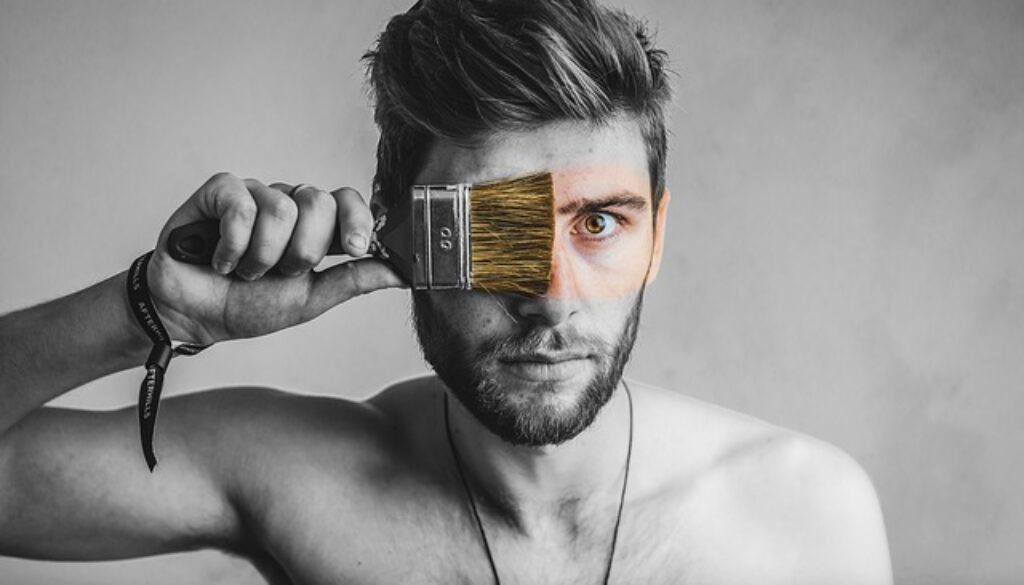The Real Self vs the “Mask”
Menanteau Serfontein – 29 December 2020. Updated 13 January 2022.
Question to yourself: Do you always present a completely accurate picture of yourself which is in line with your “real self”, or do you tend to present a picture which is unauthentic and not aligned with your “real self”? Does it matter and if so, why?
Most people wear a figurative “mask” of some sort, meaning that most of us tend to put our “best foot forward” by presenting a picture of who I am which is perhaps not completely in line with the “real self”. I have no doubt that the extent of our mental health is quite strongly related to the extent to which there is genuine alignment between the “mask” and the “real self” (read more about the “real self” in the article entitled “WhoAm I?” Knowing yourself and where you are going). Ideally, there should be complete alignment between the two. The greater the difference, the greater the internal internal tension (dissonance) between the two. Most of us are familiar with the saying “You can fool some people some time, but you cannot fool all the people all the time”.  The more we pretend to be someone that we are not, the more internal turmoil there is and the greater the chances of being “caught out”. This tension normally places a massive strain on someone who is struggling with this sort of challenge and often has a significant detrimental effect on one’s mental health.
The more we pretend to be someone that we are not, the more internal turmoil there is and the greater the chances of being “caught out”. This tension normally places a massive strain on someone who is struggling with this sort of challenge and often has a significant detrimental effect on one’s mental health.
I believe that the ideal is to be genuine and to be someone of whom others will say “what you see is what you get”, i.e. presenting your authentic self to the world with “warts and all”. This is much better than putting up a fake front with undesirable tendencies being hidden in the dark, hoping that no-one will find out.
Be honest with yourself and take responsibility
The beginning of honesty (dealt with in the article “Integrity and Honesty”) is to be honest with and about yourself. Face yourself – look at yourself honestly in the mirror, stop any self-lies and repair yourself. This may well take some time, but it is worth it. 
When things go wrong, what is your first response? Do you look at yourself first, honestly asking yourself to what extent you have either been the cause of the problem or might have contributed to what happened? Or is your instinctive immediate reaction to blame someone else or the “circumstances”? If so, you would most probably tend to be the “victim” who blames everything and everyone else, instead of looking at yourself first, asking “what have I said or done” that might have resulted in, or contributed to, the problem that occurred. If you truly know and believe that you played no part in causing the problem, then it is okay to cast the blame elsewhere. However, if you come to the realisation that it was your fault or that you have contributed to the problem, then the healthy response is to be courageous enough to take your fair share of the responsibility for your role in causing the problem.
Face up to problems/issues and take ownership/responsibility. Don’t focus on others and rather monitor your own behaviour. Evict your victim mentality from your mind and heart. Take responsibility for your life and start doing something about those areas requiring attention.
To own up, is often difficult, but it is the right and healthy thing to do. Being honest with yourself and others, will leave you with a clear conscience, enabling you to put things behind you relatively quickly and such an approach tends to engender respect from others. (Other factors playing a role in obtaining a clear conscience, are discussed in the article “Duty, Trustworthiness, Reliability, Dependability and Faithfulness”).
One of the factors playing a role here, is the need for a clear conscience. Key components of living with a clear conscience include a high degree of integrity and honesty (covered in the article Integrity and Honesty) coupled with a relatively high alignment between the “real self” and the “mask”. Those with a clear conscience usually have a better chance of sleeping well at night.






